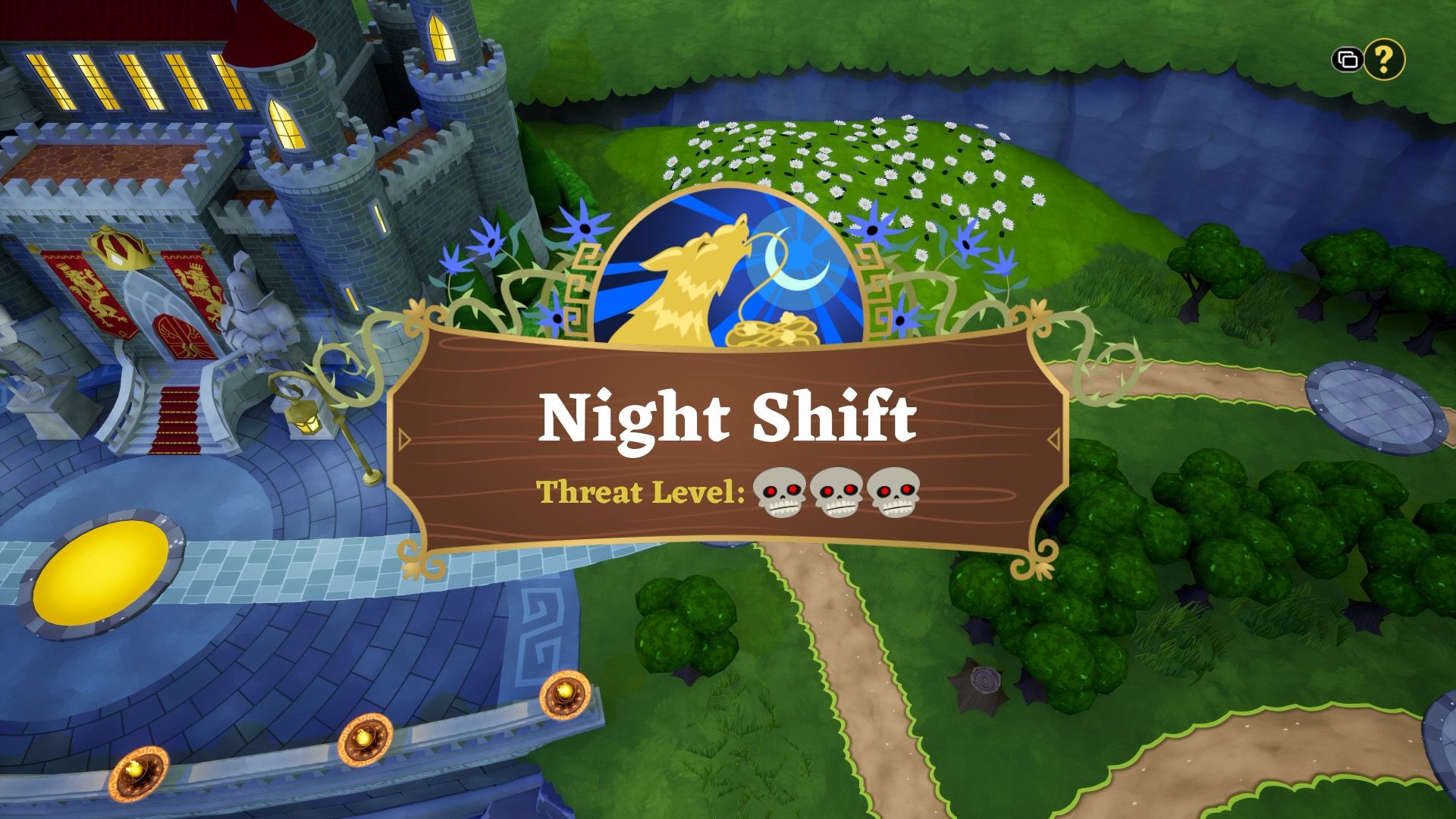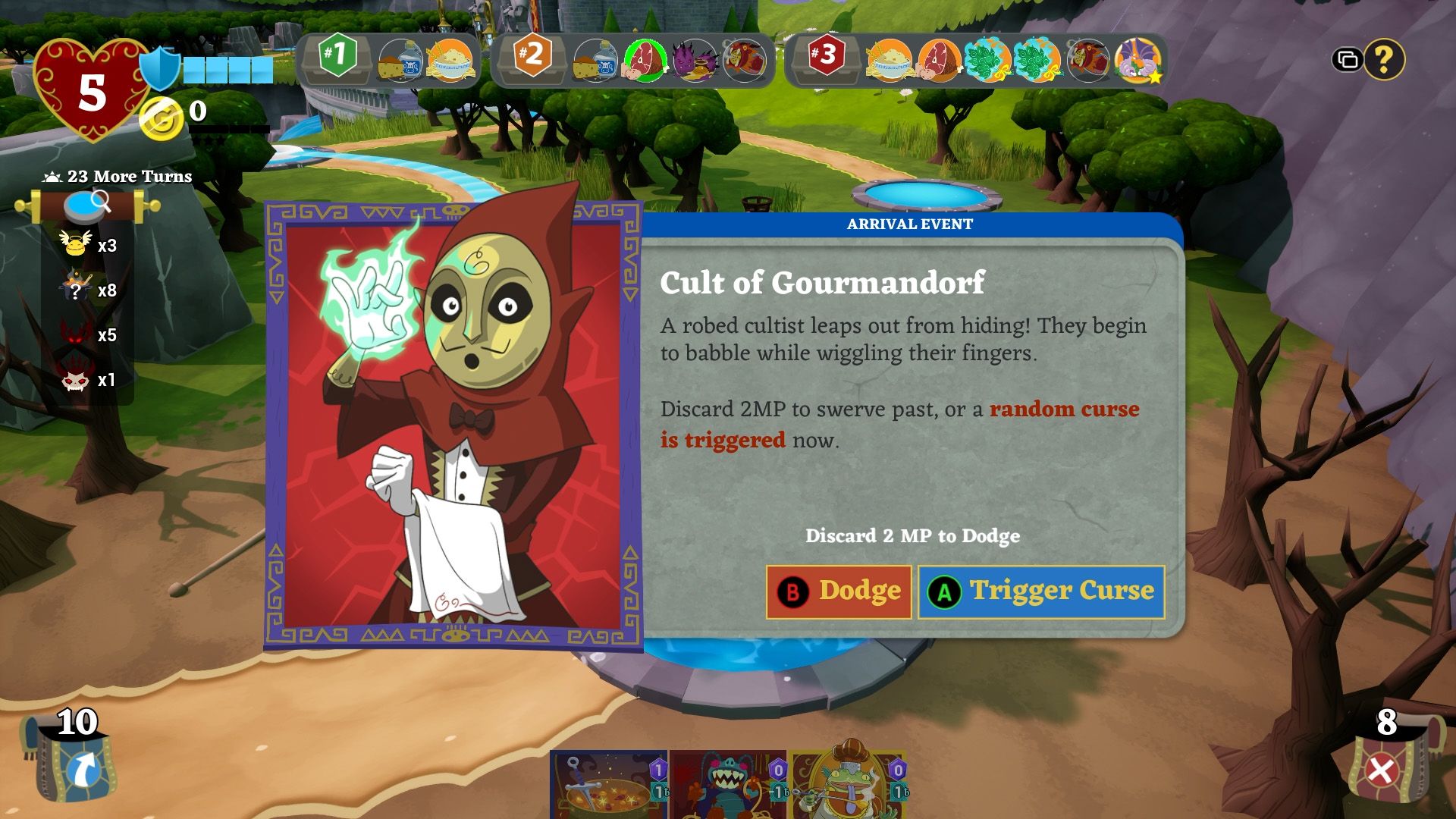Mage Food Truck is a deckbuilding game where players must utilize their cards to feed a hangry realm by finding ingredients, turning those into a meal, delivering said meal, and preventing the food truck from being totaled by monsters. A successor to Space Food Truck, a game where players did all of this in a Sci-Fi setting, Mage Food Truck adopts a more fantastical approach with Dungeons and Dragons influences.
In fact, Adam Stewart (the solo developer for Mage Food Truck) told Game Rant the Bard character is his Dungeons and Dragons character in a recent interview. Overall, we spoke about what the solo development process for Mage Food Truck has been like, what he learned from Space Food Truck and how that has been implemented, and who he thinks will enjoy feeding the hangry realm. The following transcript has been edited for clarity and brevity.
Mage Food Truck Development
Q: Where did the idea for Space Food Truck and now Mage Food Truck come from?
A: Space Food Truck was initially conceived of by my former dev partner, Alex Okafor. He was a fan of deckbuilding games like Dominion, but wondered why nobody was making a cooperative deckbuilder. He was also leaning toward making a game without violence in it. I remember him pitching the idea as “You run a food truck basically, in space” and my immediate response was “We definitely have to call it Space Food Truck.”
Choosing this current project, the scope of something like a digital board game was appealing, since Hex Gambit was the most content I’ve ever generated. So I explored games in that space for inspiration, including Space Food Truck. SFT wasn’t designed to be played single-player, but you can do it. So I wondered…how many people actually played this as a co-op game? Asking around, I discovered a lot of fans had played it alone, managing four decks!
This got my wheels turning about what would need to change for the game to work with one deck. You know you’re on to something good when the answers lead you down a deep rabbit hole. Without co-op or online components, I couldn’t call it Space Food Truck 2, so I went with a fantasy theme inspired by my weekly DnD group. The Bard in Mage Food Truck is actually my DnD character, Ziggy McJagger.
Q: What did “day one” of Mage Food Truck look like?
A: It starts with spreadsheets, digging up the old Space Food Truck sheets, and analyzing odds and rarities and expected outcomes. Once you have something that looks good on paper, you test and tweak. I wanted to refine the gameplay as quickly as possible, so I implemented all my ideas with just gray boxes and text and a truck made of cubes. It was a strange process. I finished basically the entire game in graybox. So I’m thinking, awesome! It’s fun and all the content is in! I can’t wait to show people…oh yeah, it doesn’t look like anything and there are no sound effects. For more than a year, my work has been 95% art and sound-focused, slowly transforming gray box MFT into something presentable.
Q: What has changed the most throughout development?
A: There was a major overhaul to the job system early on, in terms of how you access your Explore, Cook, etc., abilities using the cards. MFT merges the four players of Space Food Truck into one, so that required some experimentation.
The biggest shift in scope was when I decided to add tutorial scenarios to gradually explain the game. My art side got carried away with theming all of those maps differently, so suddenly I’m making swamp assets and temples and all this extra stuff. Adding support for multiple maps did give me the framework to add more major scenarios down the line.
Another major change for this production is not having a budget to outsource audio. I do all the art and programming, but typically I pay someone to handle the music and SFX. This game is guerilla as hell, with me doing most of the voiceover work myself, duct-taping sound effects together, and trying to make everything sound like I used professionals. MFT is extremely indie.
Mage Food Truck Gameplay
Q: What can you tell me about the Morning, Day, and Night gameplay loop in terms of implementing it and how it structures the game?
A: Space Food Truck has an event deck that throws you a curveball at the start of each turn. Under the hood, it’s actually 4 or 5 decks that get more brutal as you play. For MFT, I decided to expose that progression to the player as phases of their work day. Morning events are friendlier so you can establish yourself, but you have to play more cautiously when night comes around.
Q: How have you approached designing the various cards available in Mage Food Truck?
A: I had a good model to start with in Space Food Truck. There’s your deck of playing cards, a shop deck to gain new cards, arrival decks for exploring the map, and the morning-to-night event decks that determine how long the game lasts. It’s a lot of spreadsheets, but if I know what aspect of the game I want to affect, that tells me which deck to change.
For the playing cards, I look out for anything players frequently avoid buying in the card shop. I ask, “What would it take for me to want this?” Sometimes cards look mathematically equal in a spreadsheet, but one just feels way more valuable in the game.
I spent too much time designing the ingredient cards and recipes. I wanted them to be plausible combinations of ingredients, but you can only have so many kinds before they become too rare statistically. So I’m pondering “What ten ingredients will make the best variety of recipes?” Then I added a vegetarian mode, which removes the meat cards and meat recipes, so I had to go back and revisit the cookbook. Vegetarians have a couple of exclusive recipes because I didn’t want them to have to sacrifice variety and feel like an afterthought. The loading screen shows all the basic ingredients, and I even hid the meat on the loading screen for them.
Q: How do cards, specifically Job cards, change up the gameplay?
A: Doing well in Mage Food Truck is a balancing act. You need to find ingredients, cook food, drop it off, and keep the truck from being totaled by monsters. There are four characters on the truck to accomplish all that, and when you play a job card, you choose which of them to use. Your options are Explore the map, Cook ingredients, Protect the truck, or Motivate your crew (which unlocks the best cards in the game).
Say you have some ingredients to cook. You’ll play a job card, choose Cook, and then charge it up by adding other cards from your hand. The more cards you add, the more ingredients you can throw into the pot.
Your hand can be played in lots of different ways, depending on what you think is the most important thing to accomplish at the moment.
Q: What can you tell me about developing the events in Mage Food Truck?
A: Space Food Truck was “endless” but had a point in its event deck where the game was fully out to destroy you. That was a soft time limit, knowing you can’t endure that level of punishment for long.
In Mage Food Truck, I’ve adopted a hard time limit, so you have about 30 turns to craft and deliver as much food as possible. The night deck is rough, but it doesn’t have to destroy you to end the game the way Space Food Truck does.
Fantasy is a fun theme to work in. There’s a rival orc food truck that fires spells at you, and a Necrobomb that I found a great death metal blast for. Wild Magic events work a lot like DnD, where even I don’t know if it’ll be good or bad for each run. My favorite is a character called Gourmandorf, who curses your truck periodically as revenge for a vaguely bad customer experience. He’s mad about “that gluten-free thing.”
Q: Why did you decide to include the ability to customize difficulty?
A: It adds so much replay value and experimentation, and the customization is modeled after Hades’ heat system (which I was obsessed with). When there’s a menu of challenges instead of easy, medium, or hard, it adds strategy and player choice. In MFT, the more challenges you stack, the higher your score bonus will go. Potentially the best way to get the highest score won’t be to crank everything all the way up, but in addition to high scores, the game saves the highest difficulty that you earned 3 stars. So you can forget the score completely and just go for 3-star runs on the hardest difficulty. It’s a sandbox.
Q: Roguelikes are one of the biggest trends in the industry right now. Why do you think that is?
A: From a business perspective, you can squeeze more gameplay out of less content if you focus on flexible, emergent game design. Less content means development goes quicker and costs less, so you can charge less without selling yourself short. Then I think players like buying a game that’s highly replayable at a lower price, so it’s a win-win.
Making a roguelike feels a bit like making a movie with a single location because maybe that’s all you can afford to do or maybe you like the design challenge. But since it’s a single location, you have to make sure the script and the performances are extra compelling to keep your audience hooked. It’s easier to make than a bigger movie, but harder to do well.
Q: Overall, who would say is the “target” audience of Mage Food Truck?
A: Deckbuilding fans for sure! And anyone who enjoys board games, digital or physical. If you like Slay the Spire or Dominion or anything like that, this is a fresh take on that genre. I imagine DnD and fantasy fans will get a kick out of it. Of course, anyone who enjoyed Space Food Truck will be pleasantly surprised at all the quality of life changes.
[END]









